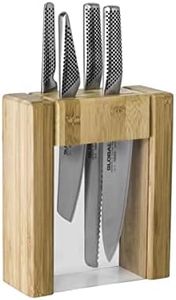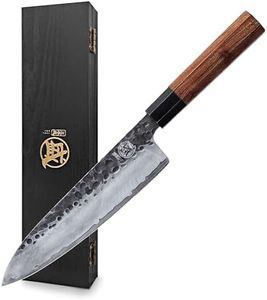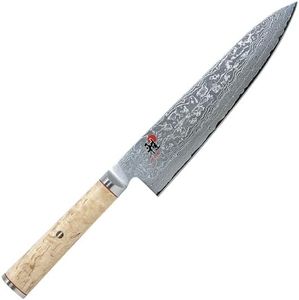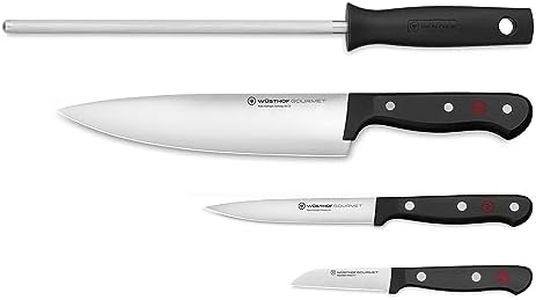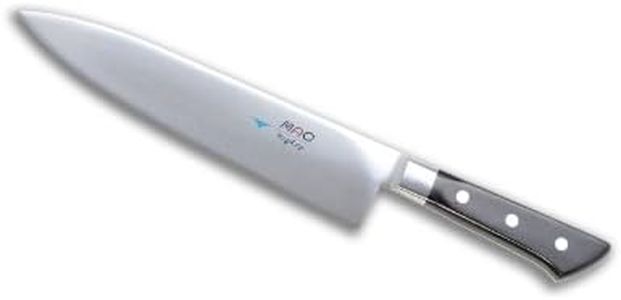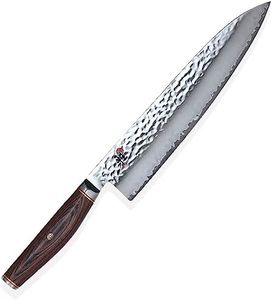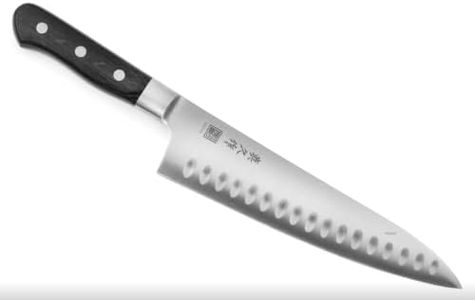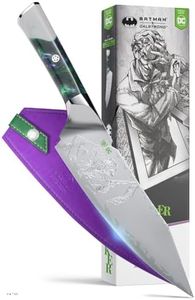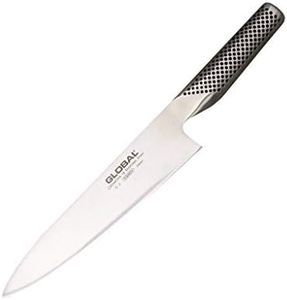We Use CookiesWe use cookies to enhance the security, performance,
functionality and for analytical and promotional activities. By continuing to browse this site you
are agreeing to our privacy policy
10 Best Professional Chef Knives
From leading brands and best sellers available on the web.By clicking on a link to a third party's website, log data is shared with that third party.
Buying Guide for the Best Professional Chef Knives
Choosing the right professional chef knife is essential for both efficiency and safety in the kitchen. A well-suited knife will make your cutting, chopping, and slicing tasks much easier and less tiring, and can significantly improve the quality of your food preparation. When comparing options, you should focus on features that match your style of cooking, the types of food you handle most often, and your general comfort while using the knife. Each chef has unique preferences, so it's important to understand the main characteristics before making a decision.Blade MaterialBlade material determines the knife’s sharpness, how often it needs sharpening, its durability, and its resistance to rust and corrosion. Common materials include stainless steel, high-carbon steel, and ceramic. Stainless steel is popular for its rust resistance and affordability, while high-carbon steel tends to hold a sharper edge for longer but may require more care to prevent rust. Ceramic blades are very sharp and lightweight, but can be brittle and prone to chipping. If you want a low-maintenance knife, stainless steel might be best. If you prefer superior sharpness and don’t mind occasional upkeep, high-carbon steel is a great choice.
Blade LengthBlade length affects the knife’s versatility and ease of use. Most chef knives range from 6 to 12 inches. Shorter blades (6-8 inches) give better control and are great for precision tasks or smaller hands, while longer blades (9-12 inches) can handle larger food items and make long, even slices but require more skill. Choose the blade length that feels comfortable in your hand and suits the size of foods you normally prepare.
Blade Shape and EdgeThe shape and edge of the blade influence how the knife cuts and what techniques you can use. Most chef knives have a curved edge for rocking motions, ideal for chopping herbs or vegetables. Some have a straight edge for push-cutting, which suits slicing meats or harder vegetables. Consider the cutting motions you use most and select a knife with an edge profile that matches your technique.
Handle Material and ErgonomicsHandle material and shape play a big role in comfort and safety. Handles may be made from wood, plastic, composite, or metal. Wooden handles are traditional and provide a warm grip but need more care, while synthetic materials offer durability and often better resistance to moisture. The handle should feel secure, balanced, and comfortable in your hand, especially if you cook for long periods. If possible, try different handle shapes and weights to see what fits your grip.
Weight and BalanceWeight and balance affect how tiring the knife is to use and how much control you have. Some chefs prefer a heavier knife for easier chopping, while others like lighter knives for precision and agility. The knife should feel balanced in your hand, with neither the blade nor the handle feeling too heavy. Pick a knife that feels comfortable after several minutes of simulated use, as this will reduce fatigue over time.
Tang ConstructionTang refers to the part of the blade that extends into the handle. A full-tang knife has a blade that runs the length and width of the handle, usually providing better strength and stability. Partial tangs are lighter but may be less durable over time. If you require a reliable, long-lasting knife for heavy use, a full-tang construction is generally preferred.
Ease of MaintenanceConsider how easy it is to care for the knife. Some blades need frequent sharpening or special cleaning methods, while others can be washed easily. If you want a low-fuss option, look for knives labeled as stain-resistant and dishwasher safe, though hand-washing is always best for longevity. If you're willing to invest time in maintenance, higher-end blades may reward your care with superior performance.
